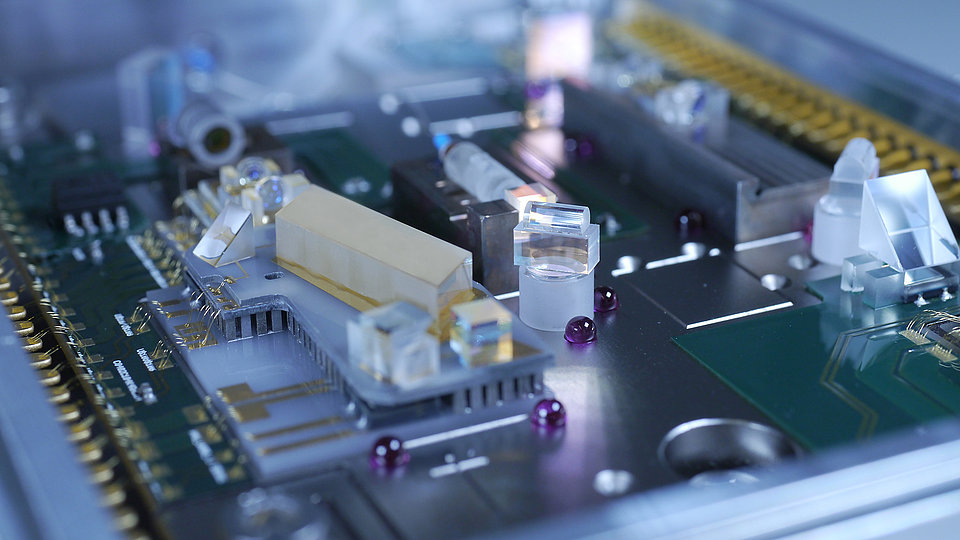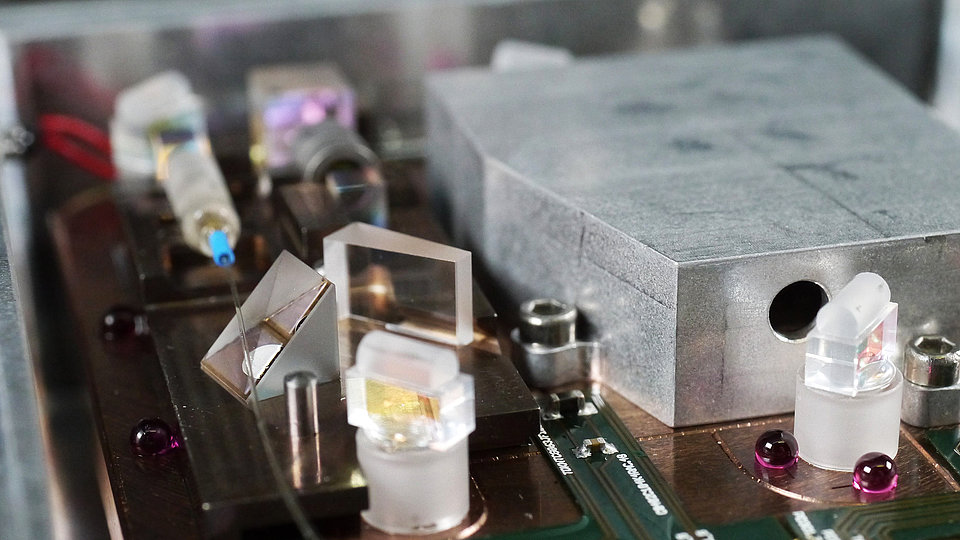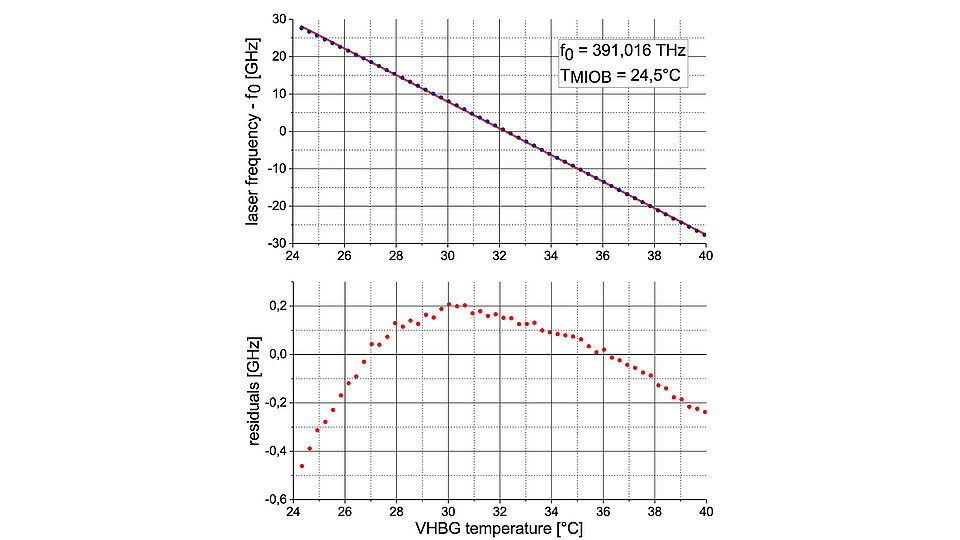Smart laser system for atom interferometer-based quantum sensors
Quantum sensors like atom interferometers and optical clocks are more precise and accurate than classical systems. Therefore, they enable to improve applications in fields such as inertial navigation, geodesy, geophysics, and earth observation as well as in high-speed trading. Developments from photonics, laser technology, and optics have paved the way for advanced solutions in quantum technology (QT) and have made significant strides in bringing QT to the market. However, exploiting the full potential of these products remains a challenge that requires a comprehensive understanding of both quantum and classical technologies.
Laser requirements are typically stated in terms of wavelength, linewidth, optical power, and system lifetime/robustness. Yet, the adjustable parameters of commercially available laser systems usually cannot be directly and easily mapped to user-accessible specifications. To augment laser technology, an integrated solution is needed that supports users, eases the workload, accelerates operation, requires less attention, and reduces the need for experienced operators. As part of an integrated solution, we have developed a high-power, narrow-linewidth laser module and a frequency-tunable frequency reference module operating at a wavelength of 767 nm. Both modules were specifically designed for the QT application to manipulate neutral, ultra-cold potassium atoms in an atom interferometer setup.
Fig. 1 shows the next generation micro-integrated laser module, which exhibits a narrow technical FWHM linewidth of 180 kHz at 1 ms timescales, while delivering an optical output power of more than 375 mW through a single mode polarization maintaining fiber. With a form factor of 139 x 80 x 33 mm3, the module is suitable for deployment in the field and in space. To improve usability, the module features advanced functionalities that actively stabilize the optical resonator length and enable mode-hop-free tuning of the optical emission frequency, even beyond the free spectral range of the laser.
Especially tailored to meet the requirements of laser automation in quantum technology applications, we have developed a compact and robust volume holographic Bragg grating-based frequency reference module, safeguarded by submitting a patent application [1]. The micro-integrated reference module shown in Fig. 2 has a form factor of 95.5 x 95.5 x 31 mm3 and uses a single-mode polarization-maintaining fiber for signal coupling. The reference module is designed to be operated in three different modes: (i) Stabilization of a laser to the frequency reference for achieving an accelerated lock-acquisition, (ii) operation of the frequency reference as a wavemeter and measuring the emission frequency of a free-running laser and (iii) recalibration of the frequency reference with a reference laser. By an intermediary stabilization of the laser to the in mode (i) operated frequency reference, laser locking to a desired atomic transition is accelerated. Initial measurements show a frequency instability on the order of only 52 MHz over a 24-hour period and a tuning range of more than +/- 20 GHz, as demonstrated in Fig. 3. In its first application, the frequency reference is intended to complement the laser module by facilitating accurate control of the laser frequency in an atom interferometer with ultra-cold potassium atoms. Characterization of the laser system in the atom interferometer experiment is planned for summer 2023.
This work was carried out as part of the project smartLC and supported by the European Regional Development Fund (ERDF) of the European Union. It was administrated by Investitionsbank Berlin within the Program to Promote Research, Innovation, and Technologies (ProFIT) under grant no. 10168115 and as part of the project CaLas. VDI Technologiezentrum GmbH supported this project with funds provided by the Federal Ministry of Education and Research under grant nos. 13N14906 and 13N15724.
Patent:
[1] J. Hirsch, M. Schiemangk, A. Wicht. Vorrichtung und Verfahren zur Frequenzstabilisierung eines Lasers. DE. Patent 102022117050.0, filed June 8, 2022.


